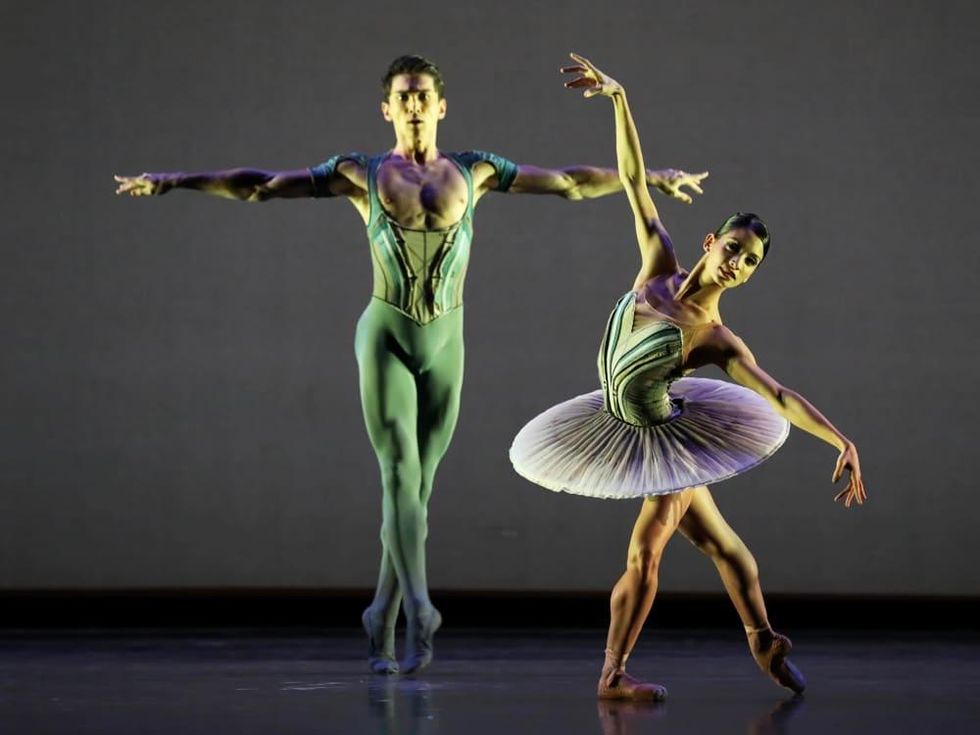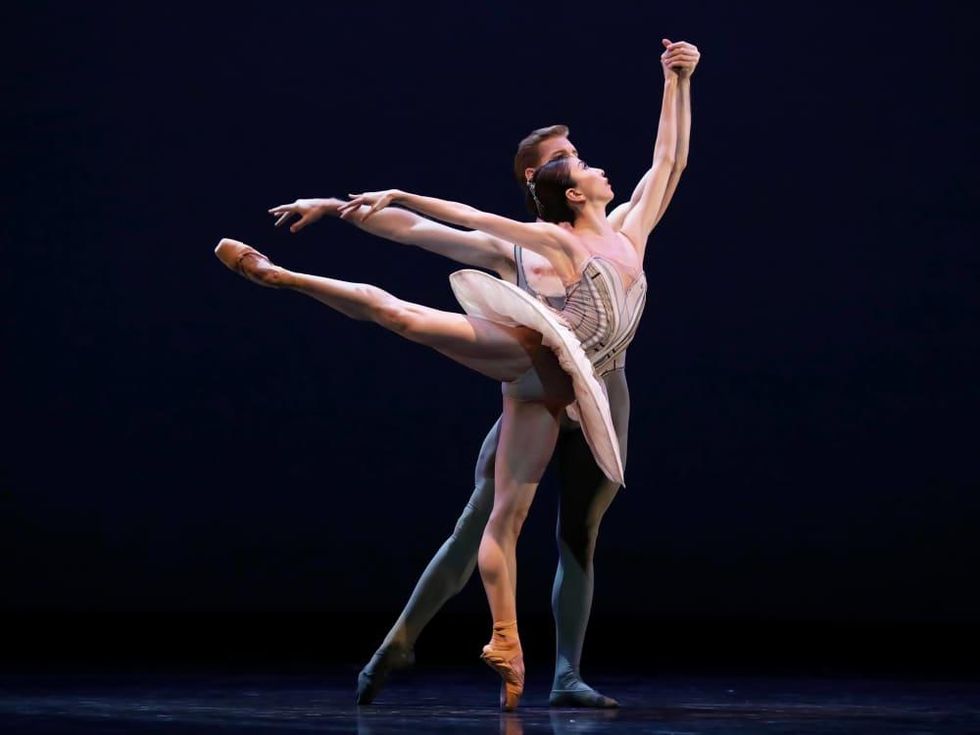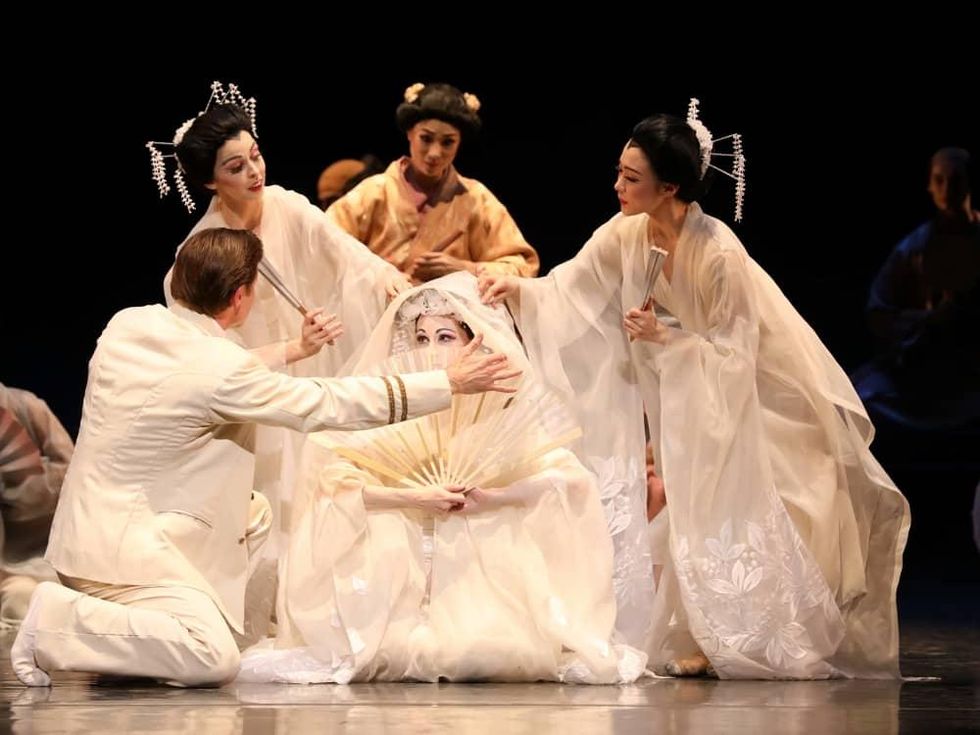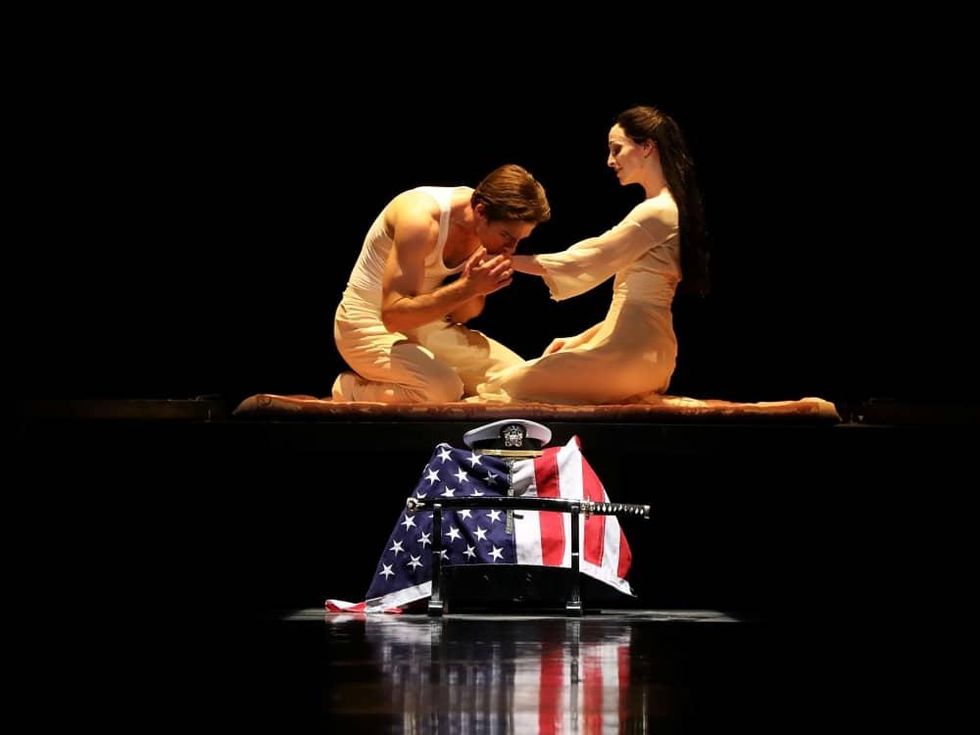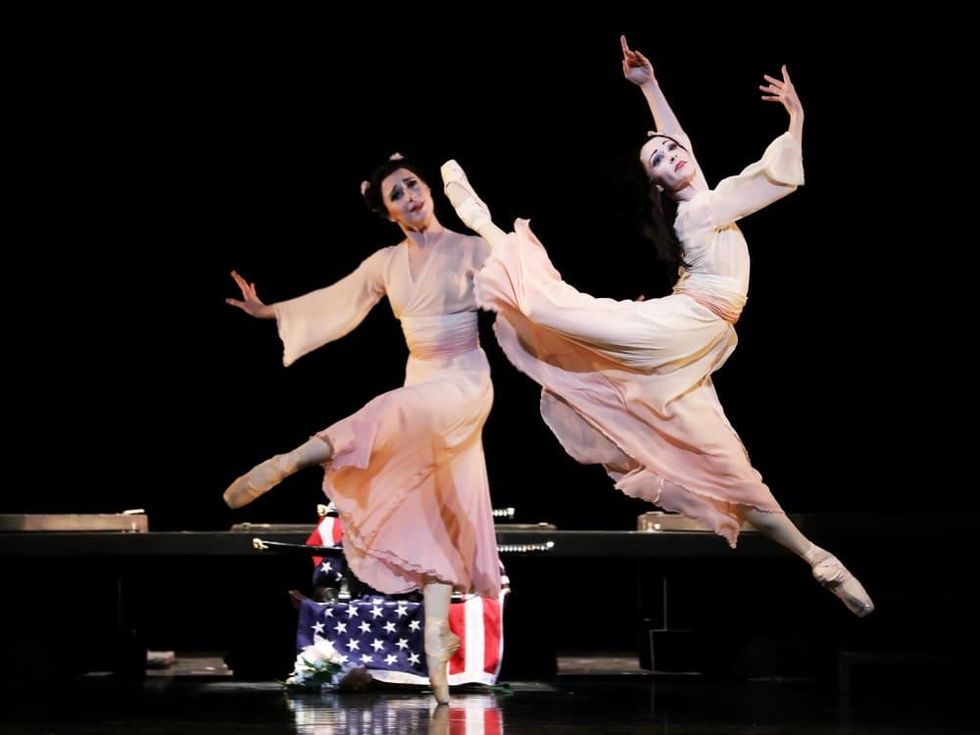Difficult Choices
Houston Ballet presents two extraordinarily different works choreographed by Stanton Welch
“Two things I could do,” Cio-Cio-san sings in “Madame Butterfly” when she imagines being abandoned by her American lover Pinkerton. It’s an impossible choice: return to being a geisha or take her own life.
Houston Ballet presented its audience with its own difficult choice between two works by Stanton Welch ill at ease with one another on the same stage. The oddly angular “Son of Chamber Symphony,” set to John Adams’ stirring score of the same name precedes an elaborately overstuffed “Madame Butterfly,” set to John Lachbery’s very fine arrangement of Giacomo Puccini’s beloved opera.
I’ve often felt the Houston Ballet falls into a programming rut. Nearly always we see either a story ballet or a mixed program with exactly three pieces of modern choreography. Certainly this program offers some relief in that respect, and one fascinating aspect of the evening is that if you didn’t know, you might not guess these works were by the same choreographer.
But the discord between “Son of Chamber Symphony” and “Madame Butterfly” provided little pleasant variation but instead an overly long evening in which the stirring surprises of the former were lost in the welter of costume drama.
“Son of Chamber Symphony” seems an ambitious musical choice for Welch and the company, a choice rewarded as the lively, jagged score offers up all the splendors of John Adams’ characteristically layered, organized discord and keeps everyone on their toes.
The curtain opens on a stark, architectural scene. White rectangles hang in the back as four men create a square around a central ballerina slowly turning. It’s an evocative image in a ballet that creates many compelling tableaux.
Each movement features a central couple. Charles-Louis Yoshiyama helps Karina Gonzalez harness her boundless energy. Christopher Coomer and Yuriko Kajiya manage for a time a tortured elegance although at one moment it seemed she nearly tumbled out of his reach.
It’s a virtue of “Son of Chamber Symphony” that it does not lavish all of its attention on these central figures. As one of the four men framing the opening movement, Derek Dunn was as sharp and articulate as he was in the company’s knock-out performance of William Forsythe’s “Artifact Suite” in the season-opening program.
Similarly, I couldn’t take my eyes off the elongated grace of Alyssa Springer, who was as compelling in “Son of Chamber Symphony” as she was in the previous program in Balanchine’s “Theme and Variations.”
A special bonus built into “Son of Chamber Symphony” is the third movement’s nod to Adams’ landmark “Nixon in China,” which the Houston Grand Opera originally commissioned and which will return in a brand new thirtieth anniversary production this spring.
Mesmerizing angularity characterized Welch’s 2012 “Son of Chamber Symphony.” I wasn’t always quite sure what motivated the movement but I was intrigued and not at all inclined to look away. The 1995 “Madame Butterfly,” on the other hand, felt cluttered, claustrophobic, stuffy, and a little exhausting to sit through. What difference nearly two decades makes.
Large scenes like the wedding felt far too crowded to allow the audience appreciate what was happening. It’s easy to get carried away when costuming a “Madame Butterfly,” and this production was no exception. Opening and closing tableaux feature a ballerina cloaked in elaborate robes stretching across the stage, which set a certain tone for the production. At times, Cio-Cio-san seems so elaborately clothed she can scarcely move. Some of the movement—the sumo-like men at the wedding—verged into kitsch with a little too much stomping and slapping.
It’s a little like an overstuffed sofa you’ve sat in a few too many times to still find comfortable.
But this “Madame Butterfly” really sings when Welch clears away the crowds and allows Cio-Cio-san and Pinkerton two moving pas-de-deux that show us exactly why the resplendent Sara Webb and Ian Casady have long been mainstays of the company.
The first pairing comes near the end of the first half of the ballet. Cio-Cio-san has been cursed and cast out by her family, but she commits herself to a world devoted to Pinkerton, building an altar to him with an American flag, a cross, and a sword. Suddenly, the hill-side home is theirs alone. As Cio-Cio-san changes, Pinkerton feels out his new situation in lithe and limber movements almost reminiscent of Jerome Robbins’ “Fancy Free.” When Cio-Cio-san emerges, the chemistry is undeniable. She leaps and he catches her, swinging her around and down to the floor.
Casady and Webb are certainly the stars, but they have more than ample support. Charles-Louis Yoshiyama plays with aplomb the often-goofy and well-choreographed the marriage broker, Goro. And he manages, also, Goro’s transformation from harmless to harrowing when Cio-Cio-san refuses to abandon her dreams of Pinkerton for the ancient Prince Yamadori. Jessica Collado is utterly convincing and compassionate as the faithful Suzuki, who watches her mistress’s tragic decline after bearing Pinkerton’s child in his absence. He returns three years later only to take their son back to America to be raised by his wife Kate after which Cio-Cio-san takes her life.
Two things this program does? Look forward and look back. Looking forward seems a far better choice.
